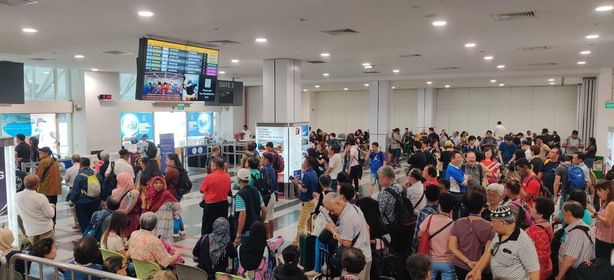Six queue management techniques to streamline customer flow
Published on December 2nd, 2019

Published on December 2nd, 2019

Having more customers than you can handle is a good problem to have, but keeping them waiting in line is not.
It's a customer experience disaster if you have a crowd of people pushing and jostling to get the service they came for. Often seen in government offices, banks and public places where there is no proper crowd control system in place.

To streamline customer flow, all you have to do is implement these six queue management techniques and technologies. Some require digitization of your existing processes, while others are about process integration to generate efficiencies. Either way, the end result will be a smooth flow of customers in and out of your locations, with reduced waiting time and happy customers.
ATMs allowed banking customers to avoid trips to bank branches for withdrawal and deposits, where you would have to jostle with the waiting crowd of bank customers eager to get service. Similarly self-serve kiosks and AI chatbots can be used to automate routine tasks that require a standard repetitive response. This makes it possible to free up staff for other tasks that must be done by humans.
Instead of having your customers crowd and jostle with each other at the counter, just issue tokens. It can be paper tokens from a token dispenser in the branch or digital tokens sent by SMS / Whatsapp on their phone. They can come just in time when their turn comes, or when they get an SMS message or Whatsapp notification asking them to come, thereby avoiding long waits and crowding in the branch.
Half the problem with crowds is the perceived wait time. When you don’t know how long you have to wait, it seems longer and more irritating to customers. When they finally do get served, the impact of the wait will spill over into customer satisfaction with the service also. In order to avoid this negative impact of perceived wait times, install a display screen that shows the token numbers being called, and let your waiting customers know how long they have to wait. You can also show the counter to which the person should go to, and the name of the staff who they have to meet.
Segment queues by service, instead of having the same counter handling multiple services. This makes it easy to monitor which service has longer queues and average wait times. So the branch manager or supervisor monitoring the data can assign more counters to these services as needed.
Let’s take an example of a health checkup that requires the patient to queue for multiple services. Once a patient starts with one service, they can automatically be assigned for the subsequent one based on the availability of staff. This not only streamlines patient flow through clinics but also makes optimal use of available staff who don’t have to be idle for long periods in between patients.
When a new customer walks into your business, you have to get to know them and their needs. But if you already know who they are and what they are coming to you for, then it becomes easier to serve them. Staff can be prepared with necessary forms and answers that a customer is going to ask. They may even send it out to customers beforehand by email, Whatsapp, mobile app or even just a simple SMS message with a link that allows customers to fill up the required information online.
These are the queue management techniques that will help move customers in and out of your physical locations quickly, while also improving staff performance and overall customer experience.